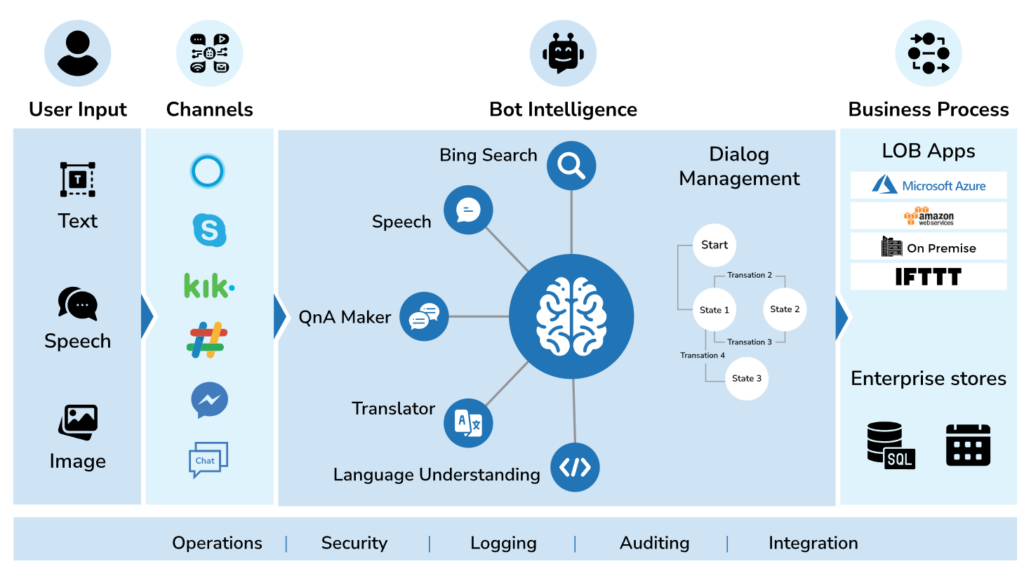Artificial Intelligence (AI) virtual agents have revolutionized the way we interact with technology. These advanced systems, commonly known as chatbots, have evolved significantly over the years. From simple automated responses to sophisticated, human-like interactions, AI virtual agents have become integral to many industries. In this article, we’ll explore the development of these technology marvels, their historical milestones, and the breakthroughs that have shaped their current capabilities. Additionally, we’ll examine some top examples of AI chatbots that showcase the current state of this rapidly evolving field.
1. Understanding AI Virtual Agents
AI virtual agents, or chatbots, are software applications designed to simulate human-like conversations. They leverage natural language processing (NLP) and machine learning algorithms to interpret and respond to user inputs. These agents perform a wide range of tasks, from answering customer queries to providing personalized recommendations. Their ability to interact in a human-like manner makes them invaluable for businesses aiming to enhance customer service and engagement.
One notable example is ChatGPT by OpenAI, a powerful conversational AI model capable of generating human-like text based on prompts. It is widely used in various applications, including customer support, content creation, and tutoring. ChatGPT’s advanced language generation capabilities exemplify how AI virtual agents can engage in meaningful conversations and perform complex tasks.
2. History and Development of Chatbots
The journey of chatbots began in the 1960s with the creation of ELIZA, an early chatbot developed by Joseph Weizenbaum at MIT. ELIZA was designed to simulate a psychotherapist’s conversation, demonstrating the potential of computer-based dialogue. This marked the beginning of chatbot development, setting the stage for future innovations.

In the 1990s, advancements in AI and NLP led to the creation of more sophisticated chatbots, such as ALICE (Artificial Linguistic Internet Computer Entity). ALICE used a more complex pattern-matching approach, allowing for more varied and natural conversations. The 2000s saw the rise of commercial chatbots, like SmarterChild, which offered users basic information and entertainment.
The 2010s brought significant advancements with the advent of deep learning and more robust machine learning models. Chatbots began to integrate with major messaging platforms, and virtual assistants like Apple’s Siri, Amazon’s Alexa, and Google’s Assistant emerged. These virtual agents could handle more complex queries and provide more personalized responses, thanks to advancements in NLP and machine learning.
3. Key Milestones and Breakthroughs
Several key milestones have shaped the development of AI virtual agents:
3.1 Introduction of NLP
Natural Language Processing (NLP) has been crucial in enabling chatbots to understand and generate human language. NLP advancements have allowed virtual agents to handle more complex queries and interact more naturally with users. For example, IBM Watson Assistant utilizes NLP to understand and respond to user queries, providing businesses with a comprehensive tool for building chatbots and virtual assistants.
3.2 Machine Learning Integration
The integration of machine learning has enhanced the ability of chatbots to learn from interactions and improve their responses over time. This breakthrough has made virtual agents more adaptive and capable of handling diverse user inputs. Rasa, an open-source chatbot framework, exemplifies this by allowing developers to build, deploy, and maintain conversational agents using advanced machine learning techniques.

3.3 Contextual Understanding
Modern chatbots can now maintain context over a conversation, providing more coherent and relevant responses. This ability to understand context has greatly improved the user experience, making interactions more seamless and intuitive. Google Assistant, for instance, uses contextual understanding to provide users with relevant information and perform tasks based on previous interactions.
3.4 Multi-Channel Integration
The integration of chatbots across various platforms, such as websites, social media, and messaging apps, has expanded their reach and functionality. This multi-channel presence allows virtual agents to engage with users wherever they are, providing consistent support and information. Amazon Alexa and Microsoft Azure Bot Service are prime examples of how multi-channel integration enhances chatbot capabilities and user engagement.

Conclusion
The evolution of AI virtual agents has transformed the landscape of human-computer interaction. From their humble beginnings as simple automated systems to their current status as sophisticated, context-aware assistants, chatbots have come a long way. Understanding their history and key breakthroughs helps us appreciate their impact on modern technology and their potential for future development.
For more insights into the world of AI virtual agents, check out our series on AI Virtual Agents and Their Applications. Explore how different industries are leveraging chatbots to enhance their operations and improve customer interactions.
FAQ
Q1: What are AI virtual agents?
AI virtual agents, or chatbots, are software applications designed to simulate human conversations using natural language processing and machine learning.
Q2: How have chatbots evolved over the years?
Chatbots have evolved from simple automated systems to sophisticated virtual assistants capable of understanding context and providing personalized responses.
Q3: What are some key milestones in chatbot development?
Key milestones include the introduction of NLP, machine learning integration, contextual understanding, and multi-channel integration.
Q4: How do AI virtual agents benefit businesses?
They enhance customer service, provide personalized recommendations, and streamline interactions across various platforms.
Q5: What future developments can we expect in AI virtual agents?
Future developments may include more advanced contextual understanding, greater integration with emerging technologies, and enhanced personalization.



